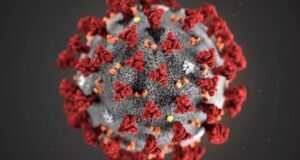
Excessive alcohol intake is commonly believed to be the main cause of liver damage, but it must be known that there are many other factors, too. The organ, which is the size of a football, can be damaged by obesity, and even viruses.
As such, the liver, which plays a vital role in the body’s digestion process and also helps get rid of toxic substances, always needs to be cared for. Liver damage can lead to scarring (cirrhosis), which can cause liver failure, a life-threatening condition.
To help you make informed decisions and keep your liver healthy at all times, Dr Arvinder Singh Soin, Chairman of the Institute of Liver Transplantation and Regenerative Medicine at Medanta Hospital, Gurugram addresses some commonly asked questions about liver damage.
What happens in liver damage?
Liver damage is when the liver is not able to perform its functions. Nausea, loss of appetite, and blood in the stool are all symptoms of the same. Treatments include abstaining from alcohol and certain foods.
What factors are responsible for liver damage?
The liver can be damaged due to various factors:
*Fat-related damage, which occurs when too much fat accumulates in the liver and causes dyslipidemia (abnormal cholesterol levels).
*Viral hepatitis is the most common type. It is caused by one of several viruses — hepatitis viruses such as A, B, C, and E. Hepatitis B and C are chronic ones and are transmitted through blood and body secretions i.e. coming in contact with the blood of someone who has the disease. Hepatitis A and E are acute ones caused by infected food and water. All these viruses can cause liver inflammation, and damage it. The chronic ones, if left untreated, can leave scars on the liver, which eventually leads to liver cirrhosis or liver failure.
*Obesity, poor lifestyle, and excessive alcohol consumption are some other factors.
*Some medicines and drugs, taken over the counter, also put an undue burden on the liver resulting in its damage.
“All these damages combine to cause inflammation in the liver, which potentially causes a fatal condition. When inflammation occurs, the liver swells, causing damage to the liver cells. When the liver heals, it leaves scars. When more than 50 per cent of the liver is replaced by scars, it is known as cirrhosis or liver failure,” Dr Soin said.
What are the signs?
A few of the warning signs of liver damage are:
*Loss of appetite
*Abdominal (upper right) pain and swelling
*Abnormal liver function
In more advanced stages people can have signs such as:
*Skin and eyes that appear yellowish, or jaundiced
*Blood in the vomit or stool
*Water accumulation in the feet and the tummy
*Excessive drowsiness and confusion
*Fatigue
*Nausea or vomiting
Can liver damage be reversed?
If there is only fat in the liver and no signs of inflammation and scarring, then fat in the liver can be reversed by keeping these things in mind
*Stopping or reducing alcohol consumption
*Maintaining a healthy body weight
*Reducing lipid levels
“In the case of hepatitis, liver damage can be reversed by removing the cause. However, in the case of fibrosis, it can only be reversed or treated at the early stages. A liver transplant is recommended if one has the end-stage liver disease (chronic liver failure) or if there is more than 75 per cent damage,” said Dr Soin.
What is the success rate of reversal?
The reversal’s success rate depends upon the condition and how severe the cause is. For e.g., an acute liver failure can sometimes be reversed with treatment. In many situations, a liver transplant may be the only cure. “Additionally, some lifestyle changes that can control or reverse the fat buildup in your liver can help in approximately 6-12 months. Inflammation and early fibrosis are often cured in three months. However, advanced scarring and cirrhosis can never be reversed and only be treated with the help of a liver transplant,” Dr Soin said.
 Weekly Bangla Mirror | Bangla Mirror, Bangladeshi news in UK, bangla mirror news
Weekly Bangla Mirror | Bangla Mirror, Bangladeshi news in UK, bangla mirror news







